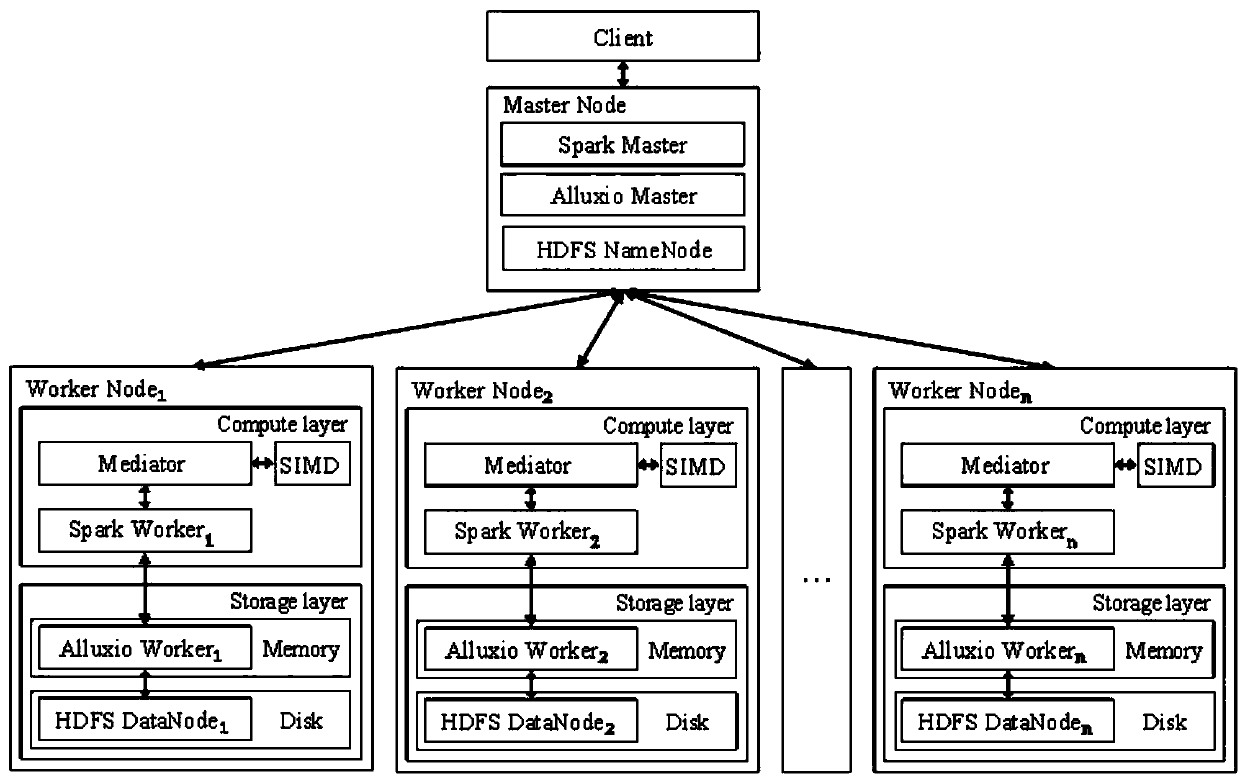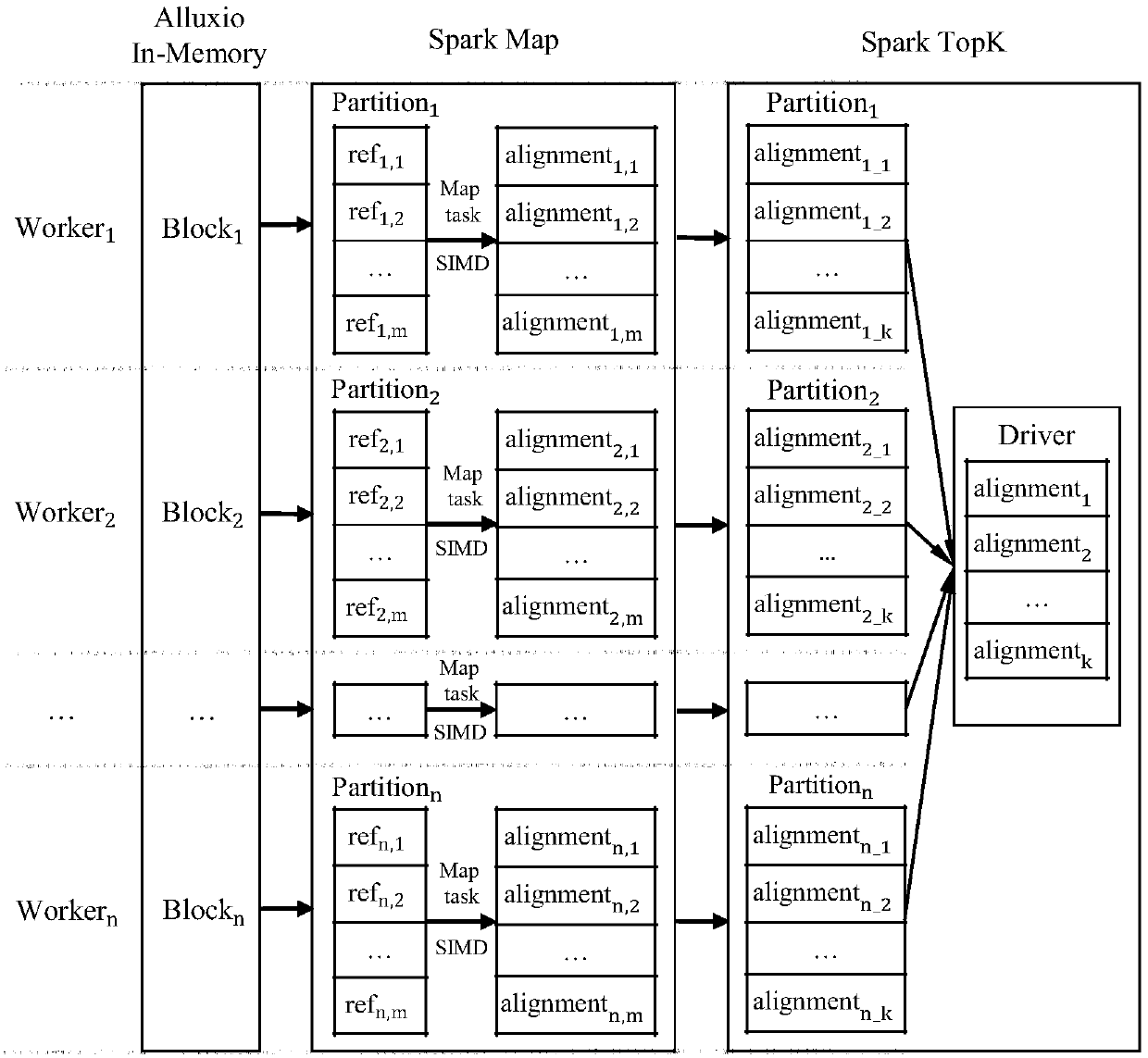Flexible distributed sequence alignment system and method based on Spark and SIMD
A sequence comparison and distributed technology, applied in special data processing applications, instruments, electrical digital data processing, etc., can solve problems such as unsatisfactory performance, achieve good scalability, and solve the effect of limited scalability
- Summary
- Abstract
- Description
- Claims
- Application Information
AI Technical Summary
Problems solved by technology
Method used
Image
Examples
Embodiment
[0034] The architecture diagram of the elastic distributed sequence alignment system DSA based on Spark and SIMD technology, such as figure 1As shown, DSA adopts a standard Master-slave architecture, mainly including a Master and several Slaves. The Master is mainly responsible for managing metadata and clusters. Each Master node mainly includes the Spark Master, Alluxio Master, and HDFS NameNode. Worker, also known as Slave, is mainly responsible for data storage and calculation. Generally, there are several worker nodes. Each Worker node mainly includes two layers, the storage layer and the computing layer. In the storage layer, in order to speed up data reading and writing, the memory-based distributed file system Alluxio is used as the main storage component, replacing the traditional disk-based distributed file system. In DSA, HDFS is only used for data persistence. The second layer is the computing layer, which is mainly based on the memory distributed computing frame...
PUM
 Login to View More
Login to View More Abstract
Description
Claims
Application Information
 Login to View More
Login to View More - R&D Engineer
- R&D Manager
- IP Professional
- Industry Leading Data Capabilities
- Powerful AI technology
- Patent DNA Extraction
Browse by: Latest US Patents, China's latest patents, Technical Efficacy Thesaurus, Application Domain, Technology Topic, Popular Technical Reports.
© 2024 PatSnap. All rights reserved.Legal|Privacy policy|Modern Slavery Act Transparency Statement|Sitemap|About US| Contact US: help@patsnap.com










